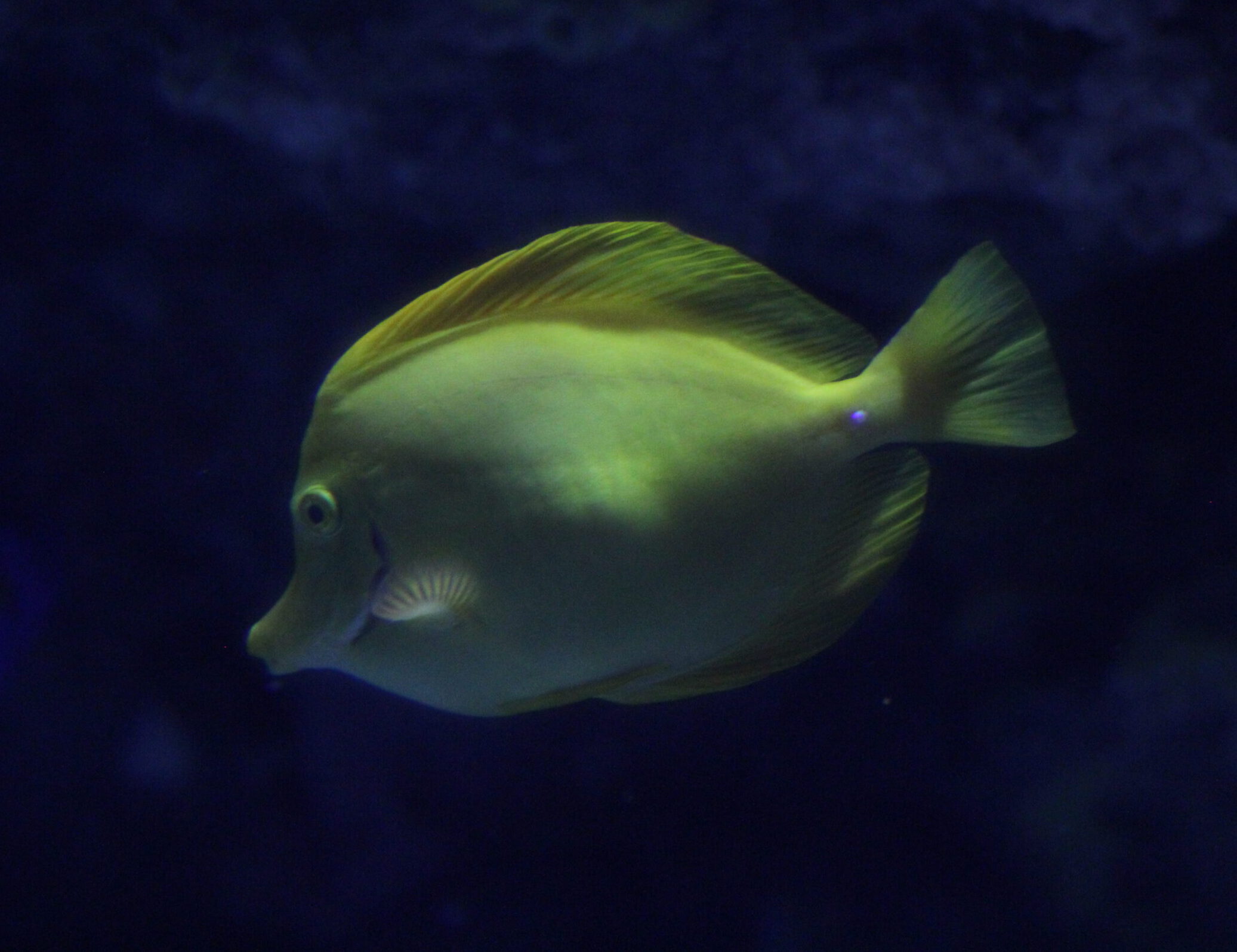I LIVE IN THE PACIFIC OCEAN
The yellow tang is native to sub-tropical waters in the Pacific Ocean, most often found living in coral reefs west of Hawaii and east of Japan where the ocean current is not very strong.
I AM AN OMNIVORE
Although the yellow tang is primarily an herbivore and will eat different types of algae and seaweed, they are considered omnivores because they will sometimes eat various zooplankton, small aquatic organisms in the plankton family.
YELLOW TANGS ARE SOCIAL
The yellow tang is a somewhat social species of fish. Juveniles can be protective of their own space, however, adult yellow tangs are most often found in loose groups of their own kinds, as well as other species of fish.
AWESOME ADAPTATIONS
The yellow tang has a small, white spine on either side of its tail that can be used to defend themselves against predators.
HELPING THE YELLOW TANG IN THE WILD
By visiting the Fort Wayne Children’s Zoo, you are supporting local, regional, and global conservation. A portion of every ticket sold goes towards conservation of wildlife and wild places. Each year, the Fort Wayne Children’s Zoo donates over $250,000 to our conservation partners.
I AM IMPORTANT TO MY ECOSYSTEM
Because of their plant-centric diet, the yellow tang plays an important role in keeping algae and seaweed from overgrowing and harming corals; they will even pick algae off of sea turtle shells. This little yellow fish is also a very important food source for larger predators in their ecosystem.

